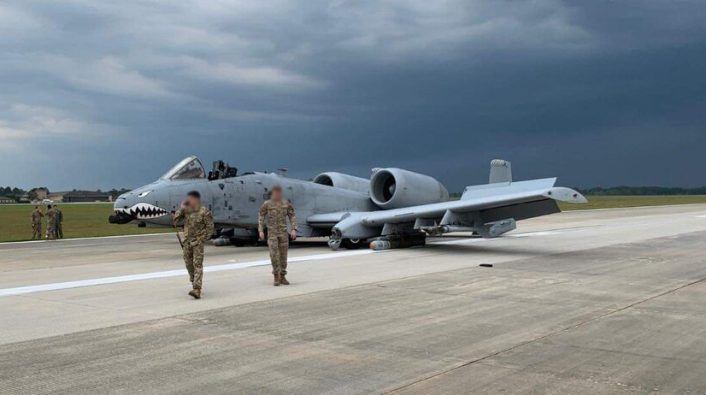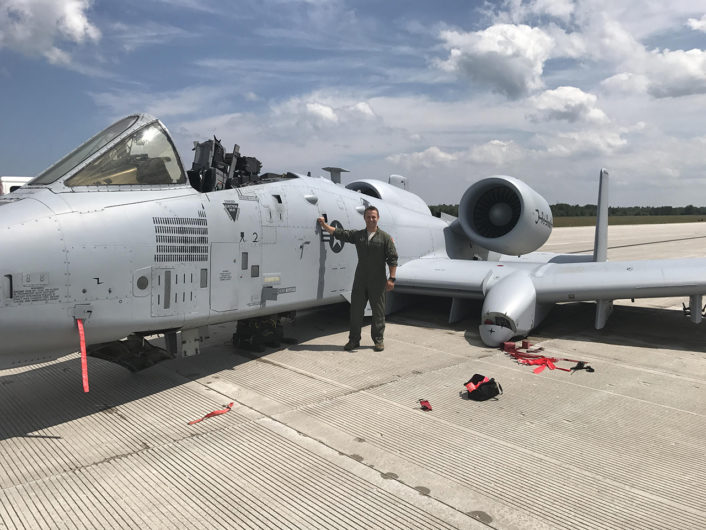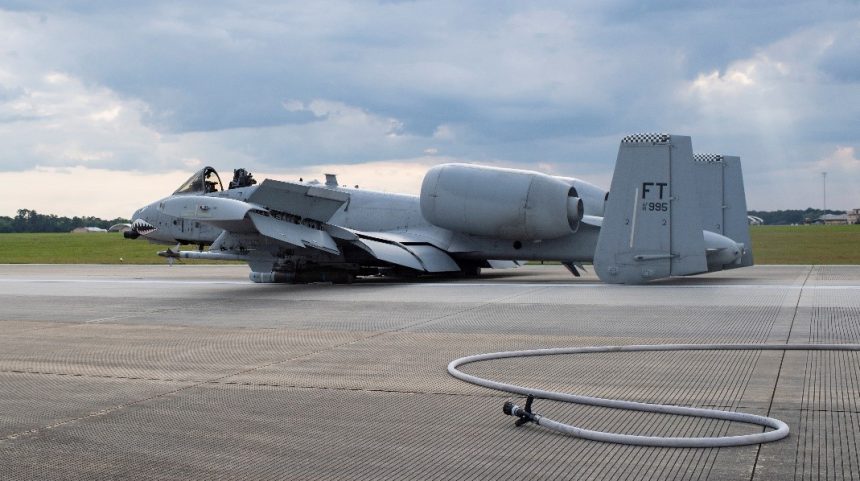Images of a Thunderbolt II on the tarmac after a gear-up landing at Moody AFB, prove how the jet’s Main Landing Gear (MLG) design contributes to make the attack aircraft so resilient.
A U.S. Air Force A-10C Thunderbolt II, assigned to the 75th Fighter Squadron, performed a successful emergency gear-up landing at Moody AFB, Georgia, on Apr. 7, 2020. The pilot safely escaped the aircraft.
The first images of the aircraft on its belly were published by the prolific Air Force amn/nco/snco Facebook page. The shots show the Warthog (as the aircraft is nicknamed within the fighter pilot community) with its canopy somehow jettisoned (or blown off) sitting on its wheels and AGM-65 Maverick missiles on the tarmac: a scene that, missiles aside, is strikingly similar to the one depicted at at the Alpena Combat Readiness Training Center, Michigan, on Jul. 20, 2017, after Capt. Brett DeVries, 107th Fighter Squadron pilot from Selfridge Air National Guard Base had just become the first ever A-10 pilot to land with no canopy and with the landing gear up.

As we reported in detail back then, Capt. Brett DeVries was part of a four-ship on a routine training sortie from Selfridge to the Grayling Air Gunnery Range. After performing six bomb passes over the gunnery range to drop their ordinance, each A-10 took a turn firing the 30mm gun. However, on his second pass, at 150 feet AGL (Above Ground Level), DeVries’ gun malfunctioned. Simultaneously, the canopy of his aircraft blew off. After climbing to a safe altitude and outside the range patterns, in bound to the closest airfield, DeVries, chased by his wingman, tried to lower his landing gear: the gear started to come down, but the nose gear was hung up from the gun damage leaving no other option than retracting the gear and perform a belly landing.

Along with the pilot’s skills, a key role in the successful outcome of the emergency was back then and probably yesterday too, one of the A-10’s peculiar features: its MLG (Main Landing Gear) design.
When retracted, the Thunderbolt II’s main landing gear wheels remain partly exposed: during a belly landing, depending on the stores carried by the aircraft, the wheels that partially protrude from their nacelles can provide a cushion to absorb the impact with the runway; they can also reduce the risk of fire and generally speaking, the overall damage to the fuselage. In addition, when the gear is up, the wheels continue to guarantee the braking action, allowing the pilot to control the aircraft through differential use of the wheel brakes. That’s why the MLG design is one the features that make the iconic aircraft so resilient.
Back to the April 7 mishap at Moody AFB, while an Interim Safety Board is investigating the incident, we can’t but notice that, according to rumours, the aircraft suffered a gun malfunction that also damaged the landing gear, as happened in 2017. Let’s see if the official investigation confirms the similarities, not only in the outcome, but also when it deals with the root-causes of the incident.









